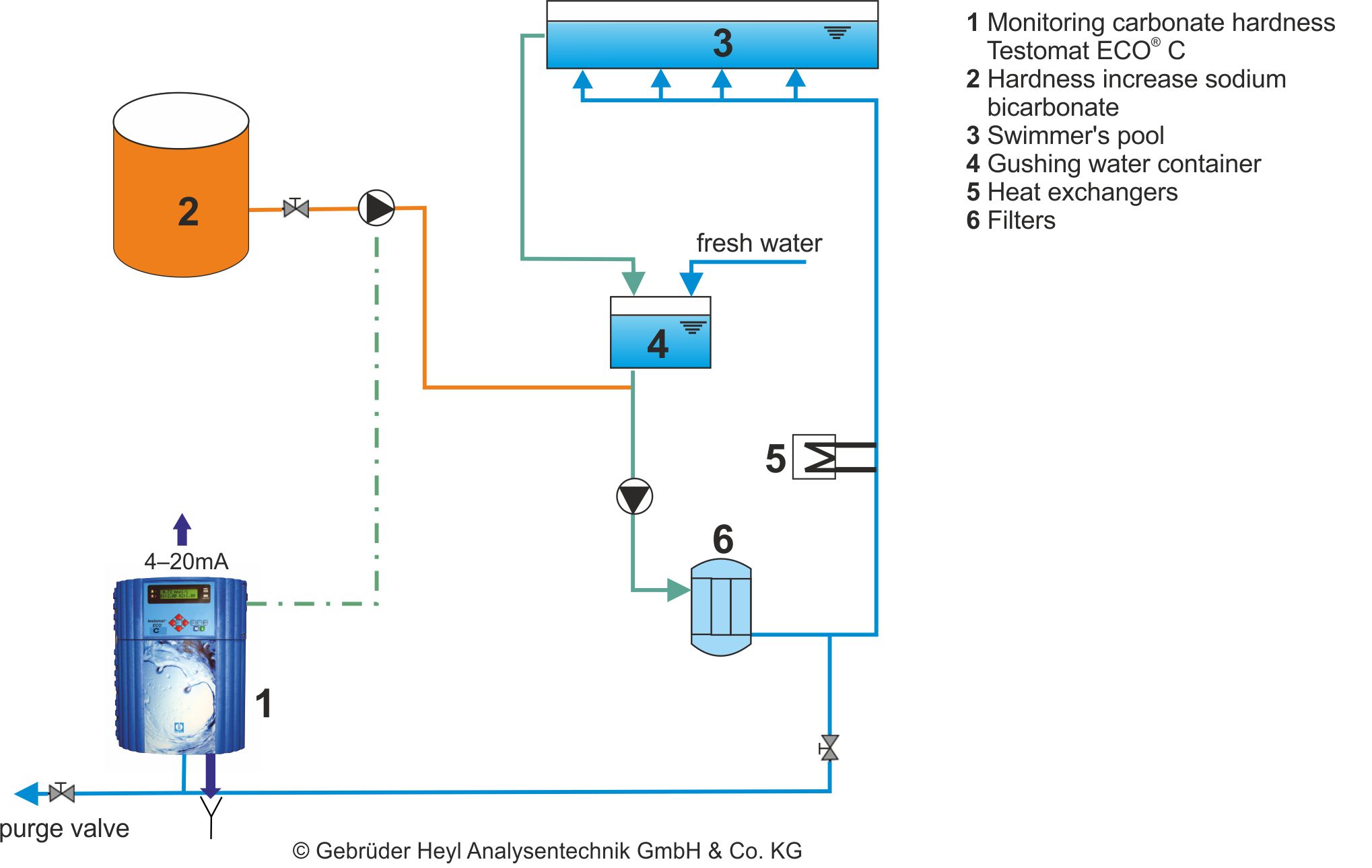Acid capacity in swimming pools
Concept solution for swimming pools

The effect of a too low acid capacity on the water treatment facility and water quality is often underestimated.
Low acid capacity makes it difficult for the pH value in the swimming pool water to stabilize. The pH value in turn effects the filtration effect and therefore the disinfecting potential.
Acid capacity also strongly influences the occurrence of corrosion in parts of the facility that are in contact with water. The water is more aggressive the lower the acid capacity is.
This leads to corrosion on metal components such as pump drives and fiber backstops, untreated concrete water tanks and on gaps between tiles.
DIN 19643 recommends a weekly inspection of acid capacity in order to be able to permanently control the water quality and the state of the surfaces that are in contact with water.
It also recommends a maximum lower limit value of 0.3 mmol for the acid capacity in Jacuzzis and 0.7 mmol in swimmer’s pools.
Through online analysis with the Testomat® ECO C, the acid capacity can be stabilized automatically. Regular inspection also helps to reduce consumables such as disinfectants and stabilizers and thus helps to save costs.
